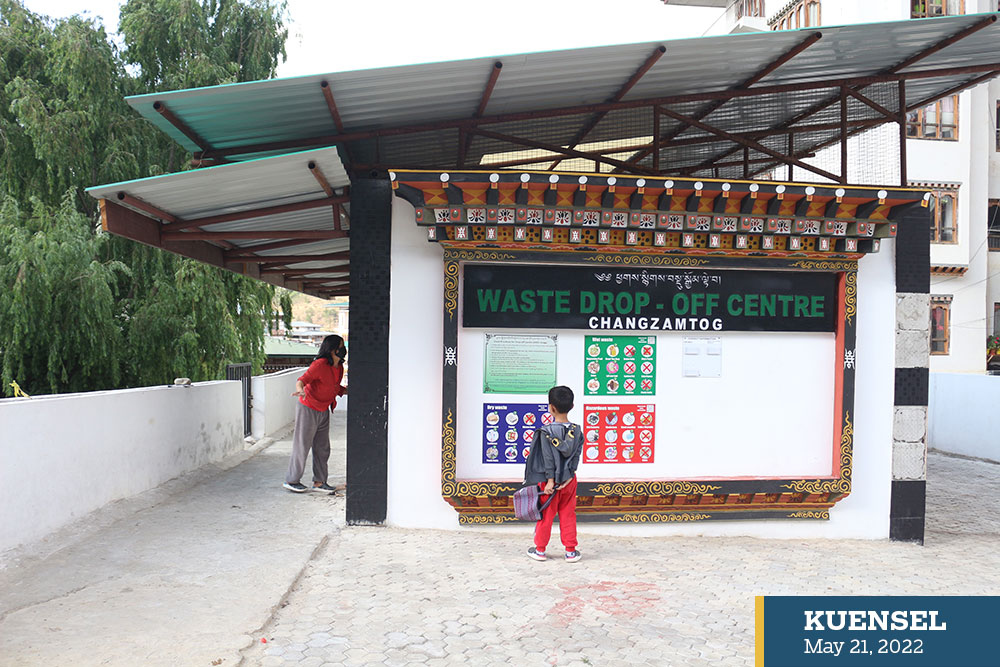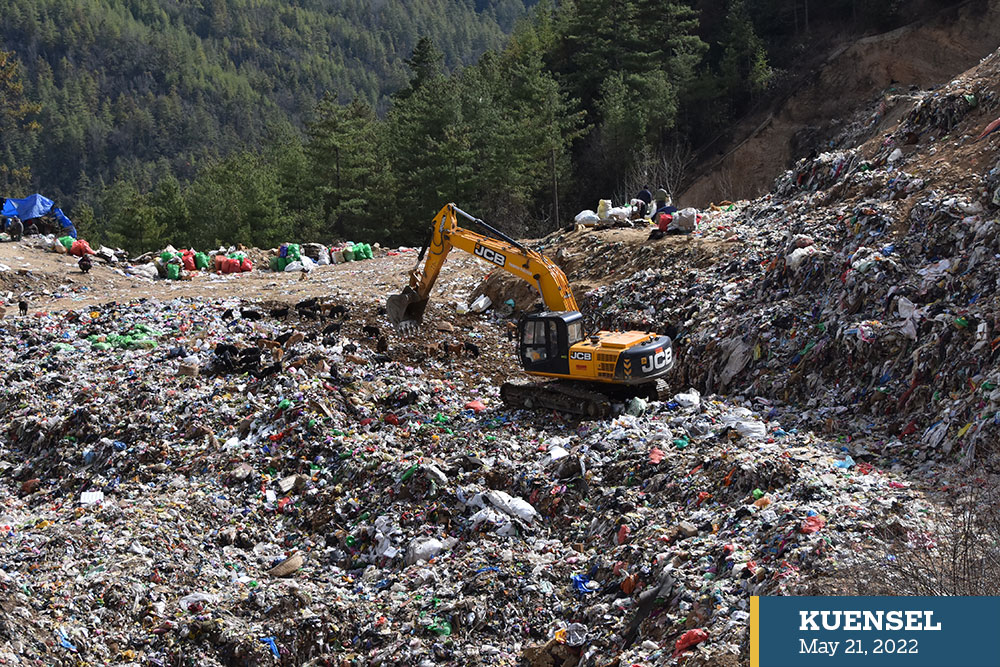Yangyel Lhaden
Thimphu thromde would construct a sanitary landfill to replace the open dump yard in Memeylakha next fiscal year.
The landfill construction would be carried out through the National Waste Management Flagship Programme (NWMFP) where 48.7 acres of land is identified to construct an integrated waste management facility with recycling plant, stockyard, compost or biogas, construction and demolition plant, and incineration plant
The old landfill in Memeylakha was built in 1993 to last for 10 years and it expired its life span 18 years ago.
An official from Thimphu thromde said the sanitary landfill is an engineered landfill while the old landfill was an open dump yard. “The design of the landfill has been finalised and we are calculating the cost estimate.”

Thimphu have nine waste drop-off centres
The official said that the current base scenario estimate shows that the sanitary landfill could last between 22 to 29 years. “The lifespan of the new sanitary landfill would depend entirely on the segregation and recycling of waste.”
In Thimphu, waste disposed to the landfill increased by about 4,800 metric tonnes (MT) in 2021 compared with 2019. In 2019, about 14,824.8MT of waste was disposed in landfill and last year 19,717.5MT was disposed in landfill.
According to the official, the construction of the first trace along with leachate collection tank for sanitary landfill is expected to take about one and half year.
Meanwhile, the flagship programme is introducing waste segregation, collection, transportation, treatment, recovery, and disposal facilities throughout the country in a phased manner starting with Thimphu.
Thimphu thromde has constructed nine drop-off centres, Thimphu dzongkhag has constructed 25 waste collection facilities in its five gewogs, and received nine electric waste collection vehicles.
Drop-off centres and waste collection facilities are disposal site in designated areas so that people could drop off their waste if they miss the waste collection vehicles.
To improve waste collection and support the flagship programme, the government and the people of Japan also provided 28 compactor trucks, three dumper placers, two backhoe loaders, an excavator and a bulldozer, and 24 containers worth Nu 330 million to four thromdes.
The flagship programme aims is achieve zero waste in the country, which means 80 percent of waste going to the landfill is reduced to less than 15 percent by the year 2030.


